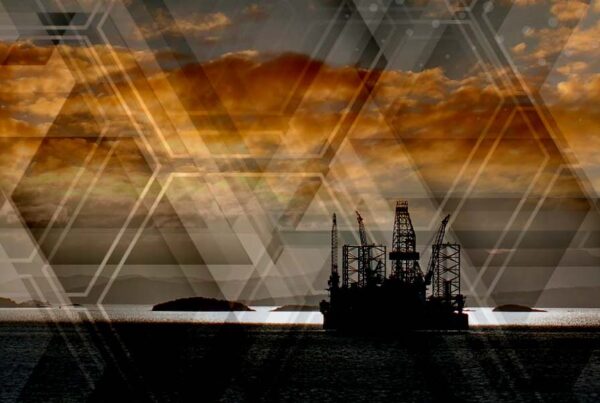MARCH 2025
Beyond the month’s funding announcements supporting supply projects and infrastructure from the EU and across Denmark, Finland, Germany and Spain, February delivered two notable developments. This edition of Hydrogen Compass will focus on the proposed Renewable Energy Directive III (REDIII) implementation plans from three EU members states and significant shifts in developer investment strategies due to a slowly developing hydrogen market. Developers are calling for greater clarity and certainty to move forward, as the market continues to face challenges and the need for clearer regulatory frameworks becomes increasingly urgent.
The next edition of Hydrogen Compass will be published in April. In the meantime, if you have any comments or feedback, please do reach out to Jun Sasamura ([email protected]).
Diverging EU hydrogen strategies and implementation approaches
At the start of February, Belgium’s new federal government, led by Bart De Wever of the New Flemish Alliance, announced support for all forms of low-carbon hydrogen production. This marks a significant shift, as the EU regulatory framework has historically prioritised renewable hydrogen. Additionally, Belgium plans to lobby the EU to relax the definition of RFNBOs[1], seeing this approach as a pragmatic step to accelerate industrial sustainability and meet EU climate goals.
As the May 2025 deadline approaches for EU member states to transpose REDIII regulations[2] into national law, differing strategies are emerging. Belgium plans to fully credit renewable hydrogen-use in oil refining towards mandates, whereas the Netherlands has proposed a correction factor for emissions credits, which could penalise companies like Shell for replacing grey hydrogen at existing refineries rather than investing in new electrolytic projects. Meanwhile, Germany has opted for a more passive approach, choosing not to impose company-specific obligations or quotas. Instead, it will rely on funding mechanisms like IPCEI and the H2Global initiative to support decarbonisation efforts. This penalty-free approach may create further challenges to meet EU mandates, as companies such as Thyssenkrupp have already announced plans to continue using natural gas until transitioning fully to hydrogen by 2037.
Amid these national policy differences, the EU unveiled its Clean Industrial Deal in February, introducing several hydrogen-focused initiatives. Key measures include a new Delegated Act on low-carbon hydrogen (to be implemented in 1Q 2025), a Hydrogen Mechanism to connect suppliers and offtakers (to be implemented in 2Q 2025), and the third European Hydrogen Bank (EHB) auction with a €1bn budget (to be implemented in 3Q 2025). The EU will also review RFNBO regulations to address barriers to renewable hydrogen scaling. While electrification remains the primary decarbonisation pathway, additional initiatives such as streamlining permitting for renewable infrastructure, launching an Industrial Decarbonisation Acceleration Act to boost demand for EU-made clean products, and implementing a voluntary carbon intensity label for industrial goods – starting with steel in 2025 – aim to support hydrogen adoption. Furthermore, an upcoming EU action plan for steel and metals, and enhancements to the Carbon Border Adjustment Mechanism (CBAM) aim to strengthen industrial decarbonisation and enhance EU competitiveness.
With EU nations taking divergent paths, the impact of these regulatory and funding measures remains uncertain. The outcome of ongoing policy finalisations throughout this year will be crucial in shaping the hydrogen market’s trajectory.
Developers are taking proactive measures
BP announced last month a strategic shift (back) towards oil and gas investment, scaling back its hydrogen and carbon capture project pipeline. The company will increase fossil fuel investment by 30% to $10bn annually while cutting planned renewable energy funding by over $5bn. BP is prioritising biogas, biofuels, EV charging, and capital-light renewable partnerships while making selective investments in hydrogen and carbon capture. The company has cited[3] slower policy, slower technology developments and higher costs, combined with reduced customer willingness to pay in the hydrogen industry as contributing factors to the scale-back. With plans to focus on only five to seven projects this decade – four of which were announced to have taken FID in 2024 – BP’s hydrogen and carbon capture investments are expected to decline significantly in the coming years. This move aligns with similar strategic shifts by Equinor and Shell, as they too have scaled back green energy investments due to investor concerns over declining profits.
Beyond the oil majors, other companies are adjusting their hydrogen strategies. Fortescue, for example, has reduced spending in its green energy division by 20%, citing regulatory uncertainty in Europe as a key concern. The implementation of REDIII mandates by EU member states remains a critical factor for developers navigating hydrogen investments.
While many developers await regulatory clarity, others are taking more proactive steps. In February, German renewable energy company Enertrag launched a public auction to secure buyers for 500 tonnes of renewable hydrogen per year from its 10MW project under construction near Magdeburg, eastern Germany. The Osterweddingen facility, which began construction in May 2024, is expected to start operations by the end of 2025, with a total planned output of 900 tonnes annually. Although initiatives like Enertrag’s are important, they remain on a smaller scale. The broader hydrogen will still need regulatory frameworks to ensure sustainable growth and long-term progress.
European Project Watch
Key project announcements and developments in February
| Project | Update |
| P2X Harjavalta | Finnish hydrogen developer P2X Solutions has secured a five-year renewable power purchase agreement (PPA) with energy company Fortum to supply its 20MW Harjavalta electrolytic hydrogen facility. The plant, which is already operational but still ramping up, also includes a 3.3MW methanation unit for producing synthetic methane. However, to qualify as a renewable fuel of non-biological origin — making the hydrogen eligible for EU quotas and subsidies — the project must meet strict regulatory conditions. Currently, the renewable power source and hydrogen production must be matched monthly. But from 2030 onwards, they will need to align on an hourly basis, posing a challenge for long-term renewable power procurement. To maintain compliance, P2X Solutions has opted for a shorter-than-usual PPA, similar to other hydrogen developers like Stegra and Air Liquide. |
| HyLion pilot project | French manufacturer McPhy will provide 80MW of electrolyzers for the HyLion pilot project in Scotland, aiming to produce 45,000t of e-methanol from renewable hydrogen each year starting in 2028. The project will capture CO2 from nearby whisky production and E. ON’s biomass power plant in Lockerbie. Two buyers, P1 Fuels and Cadeler, are set to use the methanol as a chemical base and shipping fuel. Though the renewable energy source is unknown, MHP notes that Scotland’s wind resources could support renewable hydrogen production. |
| HyVal | BP and Iberdrola have started construction on their 25MW green hydrogen plant at BP’s Castellón refinery as part of the HyVal project. The first phase involves earthworks and developing a 20,000m2 plot of land next to the refinery. Civil works will begin in the second quarter of 2025. The next major milestone is the reception and installation of the main equipment, including the electrolyser, scheduled for the second half of 2025. Once operational in the second half of 2026, the 25MW electrolyser will be powered by renewable electricity supplied by Iberdrola through a PPA from photovoltaic and wind farms. The plant will help decarbonise the refinery’s operations by replacing natural gas with renewable hydrogen. |
| Lingen Green Hydrogen | Accelera by Cummins will supply a 100MW proton exchange membrane (PEM) electrolyser system for BP’s Lingen hydrogen project in Germany, its largest hydrogen production plant to date. Using 20 HyLYZER®-1000 units, the system will produce up to 11,000t of renewable (green) hydrogen annually when fully commissioned in 2027, powered by offshore wind energy. The hydrogen will support BP’s Lingen refinery and industrial customers. BP took FID on the project in December 2024 and the project is expected to come online in 2027. |
| Agder Hydrogen Hub | ITM Power has signed a contract to supply 20MW of PEM electrolysers for Greenstat’s Hydrogen Hub Agder in Fiskå, Norway, which will produce renewable (green) hydrogen for the maritime sector starting in late 2026. The project, backed by NOK 138mn ($12.2mn) in government funding, could expand by an additional 20MW from 2027. Greenstat has agreements with maritime companies for potential offtake of over 8,000t of hydrogen annually across its projects. This marks ITM’s third Neptune V contract, reinforcing its focus on the European green hydrogen market. |
| Hyoffwind | Construction has begun on the 25MW Hyoffwind renewable hydrogen project at the Port of Zeebrugge. Developed by Virya Energy in partnership with Messer and HyoffGreen, the facility will use John Cockerill’s pressurised alkaline electrolysers and be powered by local wind farms. The project has received €30mn in funding from the Flemish government using recovery funding from the European Union (NextGenerationEU), and is expected to become operational by mid-2026, with potential expansion to 100MW. FID was made in July 2024, with John Cockerill and Besix appointed as EPC partners. While an offtaker has not yet been confirmed, the project aims to support industrial decarbonisation and mobility solutions. |
[1] Renewable Fuel of Non-Biological Origin (RFNBO) outlined in the EU’s first Renewable Energy Directive
[2] Renewable Energy Directive III (REDIII) includes a requirement for industries (ammonia/chemicals production, oil refining and steel) to source 42% of their hydrogen from renewable sources by 2030. It also includes a 1% requirement of all transport fuel to be RFNBO compliant by 2030
[3] BP Low Carbon Energy Presentation February 2025
Jun Sasamura, Manager – Hydrogen
[email protected]




